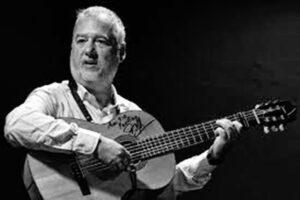IX Edición Flamenco en Red – Elementos de la música flamenca
ELEMENTOS DE LA MÚSICA FLAMENCA

En esta serie de 5 vídeos de 40 minutos de duración, elaborados por el flamencólogo Faustino Núñez, se presentan las formas musicales del flamenco, los compases, el ritmo, la melodía, la armonía y la estética.
Clases
- Las formas musicales del flamenco:
Introducciones, tercios, variaciones, falsetas, escobillas, marcajes, temples, desplantes, etc.
- Los compases y el ritmo en el flamenco.
Muestra de los principales patrones rítmicos y los diferentes compases sobre los que se realizan.
- La melodía flamenca.
Elementos melódicos, ornamentos y líneas melódicas principales de los cantes y toques.
- La armonía del flamenco.
Los acordes, tonos y tonalidades en los que se acompaña con la guitarra y otros instrumentos los distintos estilos del flamenco.
- La estética musical del flamenco.
Elementos musicales que determinan el ‘sonido flamenco’, el jipío, la rítmica acéfala, los arcos melódicos y el cierre descendente, las disonancias del toque, etc.

